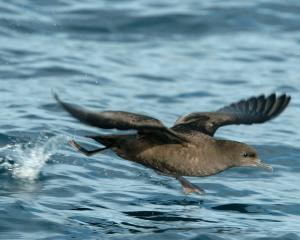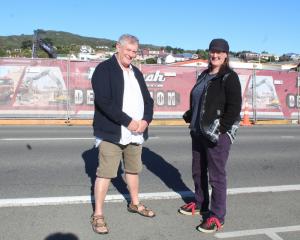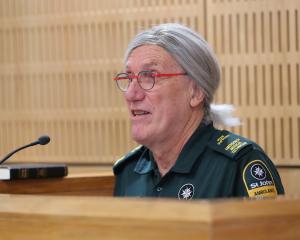Ridge tops that looked as though they had ''almost exploded'' in the mountains west of Wanaka are among the lasting effects from Monday's 5.8 magnitude earthquake there.
As well, the Earthquake Commission said it had received 17 claims for damage to property.
GNS principal scientist Dr Simon Cox told the Otago Daily Times after two flights around the epicentre yesterday it was difficult to distinguish new rockfalls caused by the earthquake from others caused by heavy rain a week ago.
The best confirmed examples were in the Polnoon Burn in the Upper Shotover River region.
''There are two sites in particular that are very interesting, very broken apart.''
''There are big, big rents in the ground, about a metre wide, 10m long, sort of cracks in the ground and the schist's all broken.''
Dr Cox explained the cracks were caused by the energy from the seismic waves having nowhere to go once it reached the tops of the ridges.
''The ridges, they look like they have almost exploded with cracks all through the ground and very broken areas.''
Dr Cox said he had seen about 20 new or ''refreshed'' landslips that could be ''clearly identified'' as having been caused by the earthquake.
He considered that was ''surprisingly few''.
''There are no major rock avalanches like the ones you see in the Mt Cook area, for example, when you get a similar sort of shaking.''
Dr Cox said the purpose of yesterday's inspection was to help compare the effects of earthquakes on different types of rock.
He and other scientists flew over Mt Aspiring Rd, which was closed because of rockfalls yesterday, but saw nothing of major concern.
The Queenstown Lakes District Council reopened the road late yesterday morning.
A few buildings remaining closed for a time yesterday, while engineers carried out inspections.
They included New Zealand Post buildings in Queenstown and Wanaka. They both reopened during the day.
Cracked glass above the entrance at the ANZ Balclutha branch closed the bank at 4pm on Monday, half an hour earlier than usual, branch manager Stephanie Edwards said.
Customers were advised to bank in Milton and the Balclutha bank reopened, at noon.
Earthquake Commission general manager, customer and claims, Gail Kettle told the ODT yesterday the commission had received 17 claims.
She could not provide any further information for privacy reasons.
Aftershocks between magnitude 2.3 and 4 continued in the Wanaka region on Monday night and throughout yesterday.











